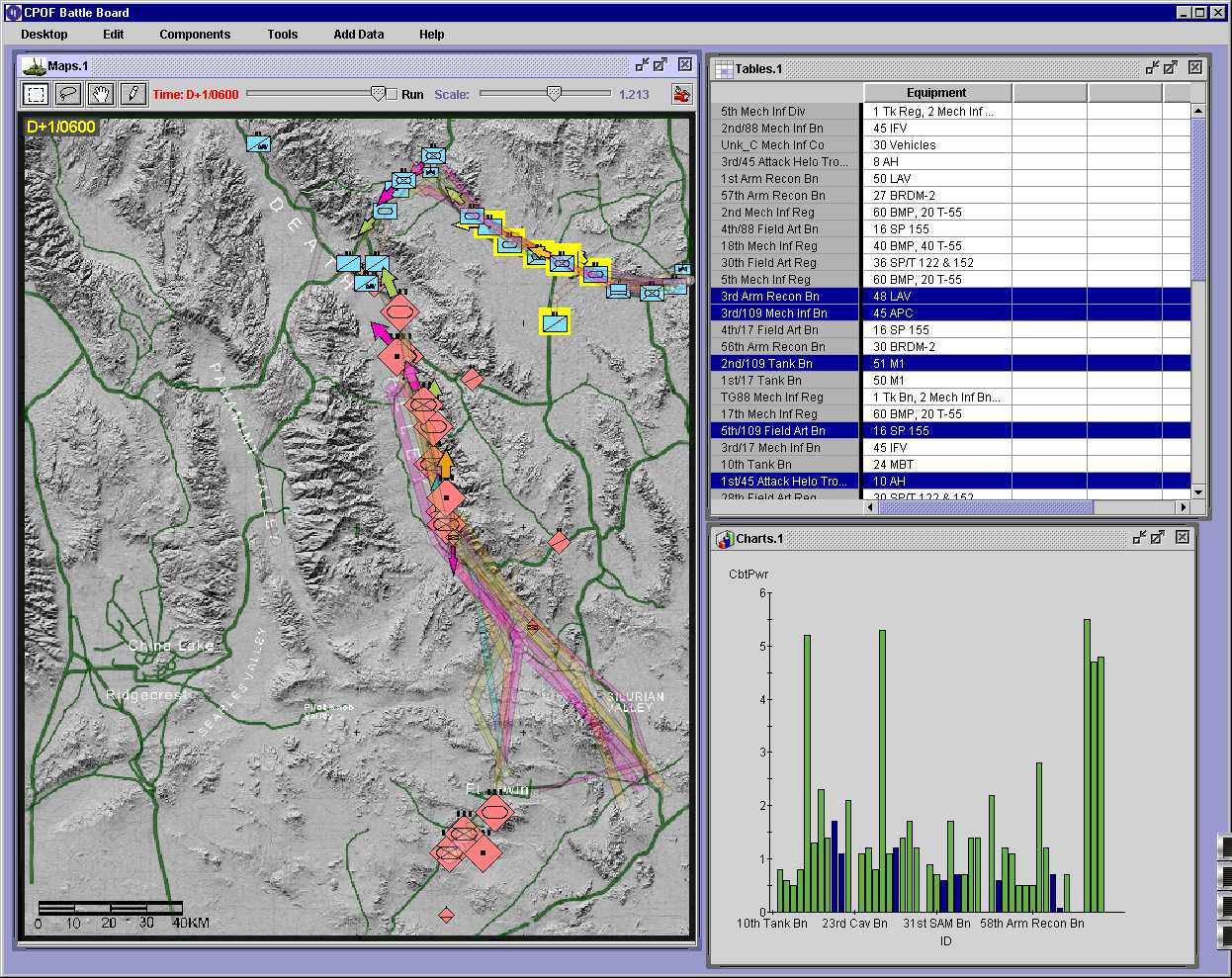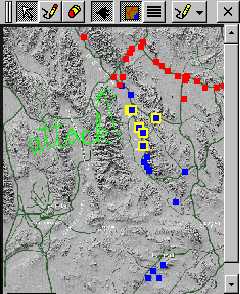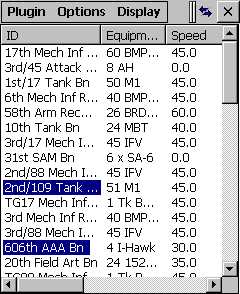|
|||||||||||
| Overview Publications Funding | |||||||||||
|
Command Post of the FutureAs part of DARPA's Command Post of the Future program, the CMU group worked on components for a Command Post Information Environment that provide new ways to collaborate with each other and to interact with supporting information assets and sources. This project ran from 1998 through 2002, and was credited with influencing some of the technology currently in use by the military. The MayaViz company (now General Dynamics Viz) took some of these ideas into the field in Iraq. The key publication about CMU's CPoF work is:
Other publications are listed on the CMU CPoF page, and the Pebbles CPoF publications page. The Pebbles part of the CPoF project focused on how handhelds can be used to access information and control devices. The results from the Pebbles part included: Private Drill-Down of Public InformationUsing visualizations of the CPoF maps, we have investigated the issues around how handhelds can be used for people in the command post to annotate, investigate and edit the shared maps and the information behind them. This research has integrated the software from MayaVis (visualizations), the CMU multimodal group (speech gestures, handwriting recognition, etc.), and Pebbles (handhelds) into one system. When the main display shows a large map (Figure 1), the handheld can be used to annotate and investigate various scenarios (Figure 2) or to drill-down to investigate in detail in a table (Figure 3).
SlideShow CommanderSlideshow Commander is a tool for using handhelds to control PowerPoint presentations, including seeing a picture and the notes of the current slide, using the handheld to annotate slides, etc. RemoteCommander and ShortcutterRemote Commander and Shortcutter
are techniques for using handhelds to control other applications running on
the PC. Laser Pointers InteractionsAn important part of the vision of the Command Post of the Future is the use of laser pointers. We have performed a variety of studies on how to make these more effective. One promising result shows that "snarfing" (copying) the area around the pointer dot to the handheld, performing the edits on the handheld, and then copying the results back works much better than trying to interact solely with the laser pointer. Collaboration and Turn-takingWhen multiple people are sharing a single large display, it can be confusing and awkward to take turns controlling and annotating. In addition to the laser pointer work, we have also studied fundamental issues of "floor control" (who has control) as well as various ways that handhelds can help. |
||||||||||
|
Copyright © 2009 Carnegie
Mellon University
Maintained by Brad Myers Site designed and developed by Htet Htet Aung This page has been visited 425405 times since Jan 04, 2005 |
|||||||||||




